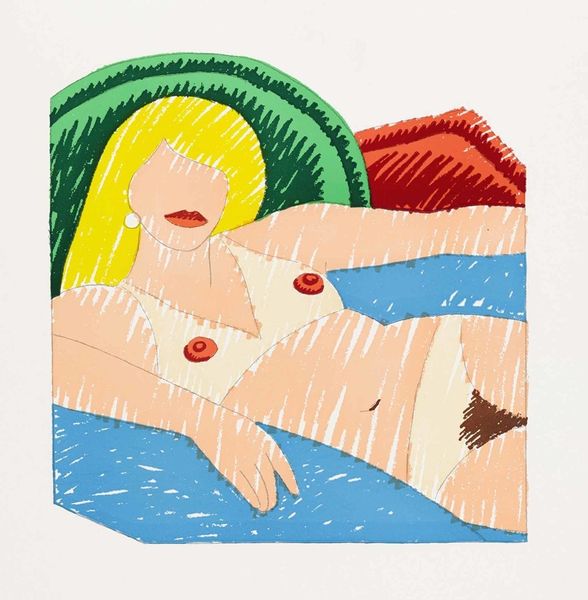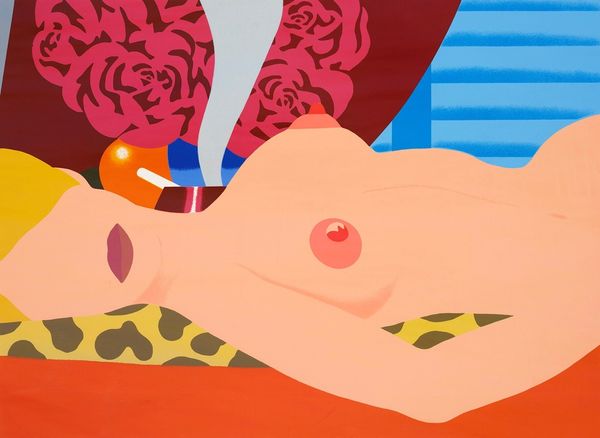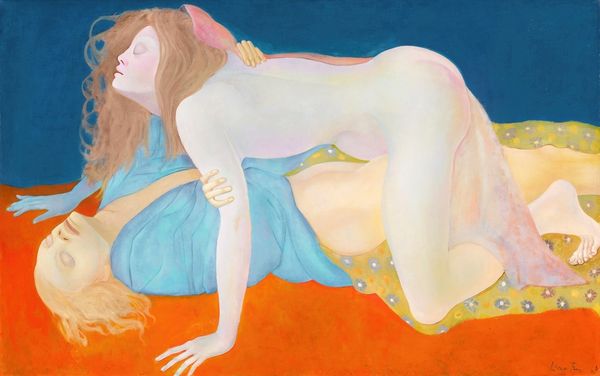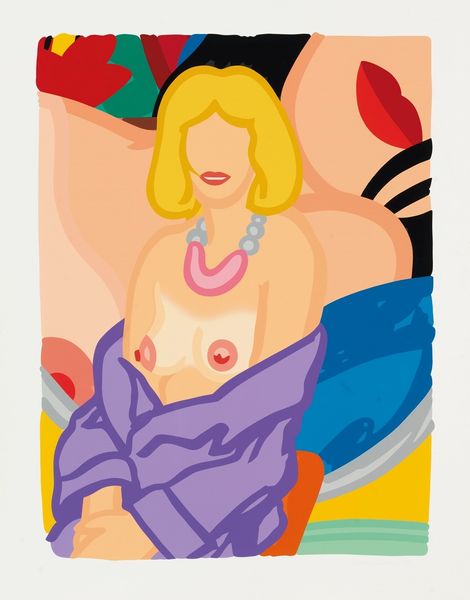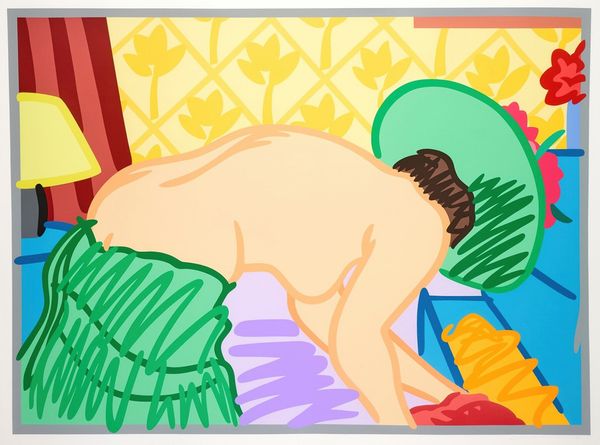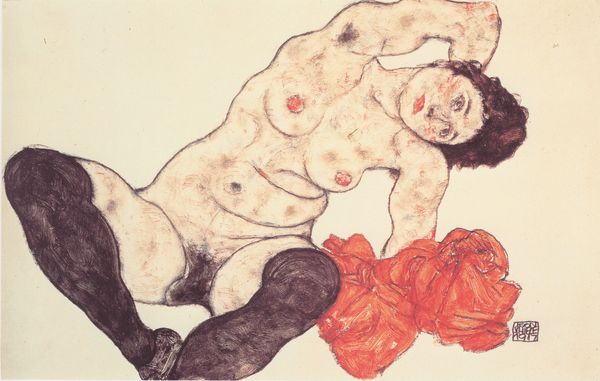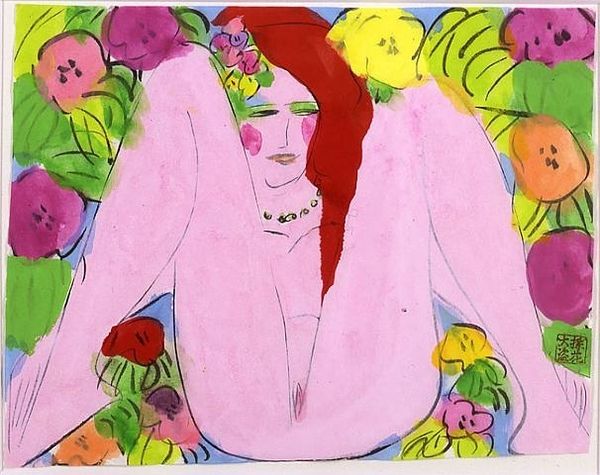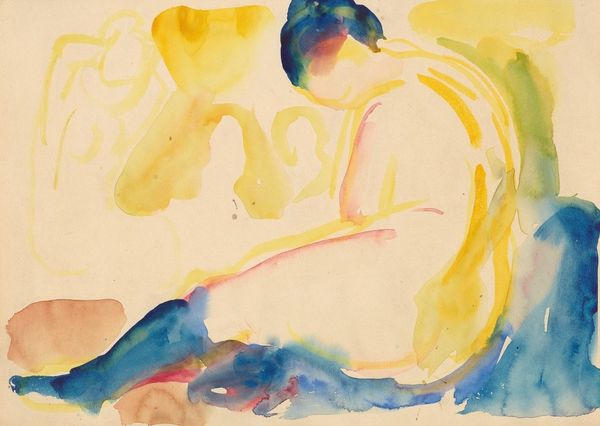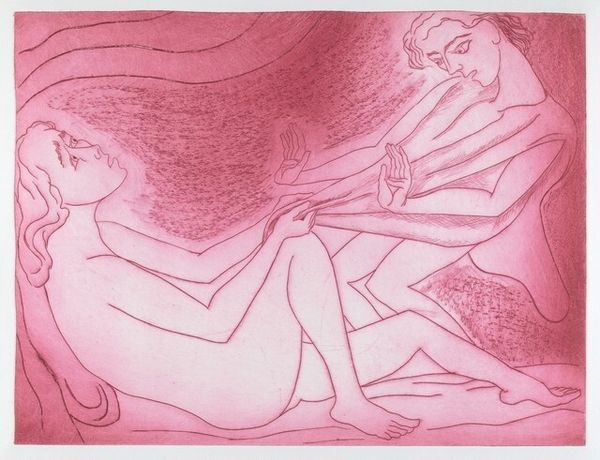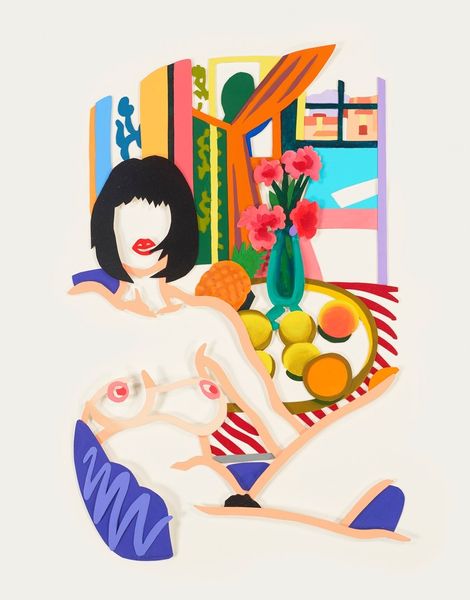
Copyright: Modern Artists: Artvee
Curator: Let's consider Tom Wesselmann's "1960 Judy Reaching over Table," a painting he actually made in 1995. It’s quite arresting, isn't it? Editor: Absolutely. My first impression is of flattened planes of color and shape that nevertheless suggest volume, primarily the nude form dominates. A composition in bold lines, reminiscent of advertising aesthetics. Curator: Yes, there's a definite graphic quality, playing on the cultural iconography of 1960s America. That pink floral wallpaper, the electric blue... They speak to a very specific cultural memory. What about the fruit? What could it imply? Editor: Given that it is close to the naked figure, I find it unavoidable to see the symbolism as erotic or suggestive of fertility, perhaps linked to an Eve-like figure in a contemporary context. Curator: Possibly. And the way Judy’s form almost blends into the background... Consider the psychological impact: does she seem trapped by this interior? The lack of facial detail invites the viewer to project their own emotions onto her. Editor: The ambiguity is certainly powerful. The bold colors combined with those simplifications create an immediate sense of something manufactured rather than felt – an aesthetic mirroring consumer culture and mass media, typical for Pop Art. Curator: And yet, there’s a very personal element. He often depicted his wife Judy in his work. What do we make of the artist choosing this deliberately "naive art" style? Editor: It introduces another layer of meaning, undermining any sense of pure eroticism with childlike rendering—destabilizing clear interpretations or singular reading of beauty, desire, or identity. A visual push-and-pull is established by the very nature of conflicting aesthetic strategies at play. Curator: Precisely. It's this tension between the personal and the mass-produced that makes it so compelling. Editor: The interplay keeps me pondering his choice of form over subject. What is being prioritised in how it is represented? Curator: Perhaps it encourages the audience to reconsider those pop art objects as carrying more symbolic weight and deeper social or psychological messages. Editor: Well put, Curator, an engaging consideration, where what it represents challenges how it is conveyed.
Comments
No comments
Be the first to comment and join the conversation on the ultimate creative platform.


